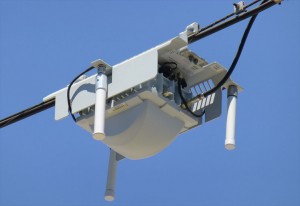On this important day, like many others, I offer my ‘where were you on 9/11?” story.
I was having a quiet breakfast when I first became aware of something quite out of the ordinary.
As I recall, the main course of my breakfast consisted of a cheddar cheese omelet. On the side were home fries potatoes and tomatoes. A small breakfast roll, butter and jam, water and orange juice rounded out the meal.
I never got to finish breakfast.
As I was eating, I the public address system came live with the following message: “All flight attendants to the intercom!”
A minute later, the public address system crackled alive once more with the additional even more ominous message: “Chief Purser to the Cockpit.”
As you’ve no-doubt figured out, I was having my breakfast eleven years ago this morning while sitting in a United Airlines Boeing 777. I was, at that moment, at about 35,000 feet en-route from Miami, Florida to Denver returning home to Los Angeles from a conference I had been attending in Miami Beach.
At the time of the Captain’s announcements, the GPS screen showed the aircraft to be approaching the western edge of the Florida panhandle, just where it meets the Gulf Shores area of Alabama.
Moments after the twin announcements, the cabin crew reemerged and silently started what can only be described as a frenetic meal service clearance and cabin preparation for what we all feared would be a crash landing. The flight attendants said they didn’t know what was happening but that they had to do their emergency clear per the Captain’s order.
About this same time, the giant plane began a series of less-than-gentle S-turns, first left, then right, then left again, and right again. While this was happening, the plane was also shedding altitude at a serious clip.
Finally, while the plane was making its turns, the Captain came on the public address system once more, now directly addressing all of the passengers. He told us that as we all suspected, our plane was going to make an emergency landing, but in the very same breath he made it clear that the problem was not with our aircraft. He continued saying that ‘Air Traffic Control was going down all over the East Coast’ and we had no more than 15 minutes to get on the ground somewhere.
Anywhere.
Anywhere turned out to be Birmingham, Alabama, at Birmingham-Shuttlesworth International Airport, some 200 miles north of what was our present position. If you do the math, to be on the ground 200 miles away in 15 minutes would require the plane to travel at faster than speed of sound, and as good as Boeing 777s are, they aren’t that good. It was closer to half-an-hour before we landed in Birmingham.
Why Birmingham, Alabama?
The Birmingham airport had an unusually long runway at 10,002 feet (since increased by another 2,000 feet), and a shorter runway of 7,100 feet. Because our aircraft was carrying unspent fuel to travel all the way across the country (including the safety reserves), the aircraft needed a long runway to land with its heavy load.
When we landed in Birmingham and rolled to a stop, the first thing I did was to pull down my carry-on bag and call my wife on my cell phone.
As she started talking to me, I repeated out loud to the passengers and crew around me everything she was saying:
Two planes had crashed into the World Trade Center towers…
…another plane had just crashed near Washington, D.C…
…the Air Force was trying to shoot down two more planes…
I remember feeling disembodied while I was repeating what she was telling me. I was the observer of my own person. Never before, nor since, have I felt this nearly indescribable sensation.
The cabin around me was silent. The faces of the passengers and crew were drained of all blood. We stared into each others eyes not knowing what to say, what to do.
It turned out that we didn’t have much to do for quite a while.
This was the first time a United Airlines Boeing 777 had ever landed at Birmingham. United had no way to actually get us off of the aircraft. All of their airstairs were were for much smaller aircraft, and every Jetway was occupied by other aircraft of all types, sizes, and livery.
About 90 minutes after landing, United was finally able to secure portable airstairs from the UPS freight terminal at the airport. We made our way down the airstairs with all of our carry-on bags, but we were told that there was no way for them to unload our containerized luggage. We would have to do without our luggage for the duration, however long that might be.
Inside the terminal, there were no TVs so we still didn’t know what was happening in the larger world.
United’s small staff was furiously registering passengers and handing out hotel, food, and taxi vouchers. I was so impressed to see that United’s staff was being assisted by staff from many other airlines who were helping out in the process. On that day eleven years ago, you worked for the airline industry, not for any particular airline.
The airline hotel vouchers being handed out were for local airport-area hotels. It occurred to me that the no one knew what was really happening, and it might not be the best of ideas to stay at a hotel next to an airport that also happens to be a military base used by the Air National Guard.
Having worked in the Birmingham area over the years, I knew of a very nice Holiday Inn about 7 miles and several ridges away in Homewood, Alabama. Yeah, that would work just fine for me. After a few quizzical looks, the person issuing vouchers gave me one marked for the Holiday Inn in Homewood.
By this time, all of the ATMs inside the airport had their dispersing needles all the way in the red area below “E” and I only had about $20 in my wallet.
With no luggage, and only with the cloths I was wearing and my carry-on bag, I took a taxi to the hotel. Upon entering, I spied an ATM machine in a corner of the lobby. Before even checking in, I drained the hotel’s ATM. Then I checked in.
I entered my hotel room, turned on the TV, and joined the rest of the civilized world watching the uncivilized horror and carnage of that day play out over-and-over a hundred times; a thousand times.
I made it back to Los Angeles some four days later.
Like I said, I was having a quiet breakfast just four days before on 9/11/2001.
Today is a day of remembrance for all of us on a personal basis, and on the much larger basis of uniting all against evil.
Jonathan








